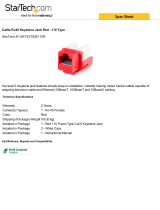
Table of Contentsiv
Laser Pointer Operation ............................................................. 22
Mouse Function Operation ........................................................ 23
Zoom In + / Zoom Out - ............................................................ 23
Volume Adjustment ...................................................................23
PIP (Picture In Picture) Operation ............................................ 23
Freeze ........................................................................................... 24
Preset Mode Selection ................................................................. 24
Menu Operation .........................................................................25
Menu System ................................................................................................ 25
Using the menus .......................................................................................... 26
1. Display Menu ........................................................................................... 27
2. Image Menu ............................................................................................. 29
3. Source Menu ........................................................................................... 31
4. Control Menu .......................................................................................... 33
5. PIP (Picture In Picture) Menu ................................................................ 35
Maintenance ......................................................... 36
Cleaning the lens .......................................................................................... 36
Cleaning the projector case ......................................................................... 36
Cleaning and replacing the air filters .......................................................... 36
Storing the projector .................................................................................... 37
Transporting the projector .......................................................................... 37
Lamp Information ......................................................................38
Use and Replacement of the Lamp ............................................................. 38
Lamp Replacement ...................................................................................... 38
Temp Warning Light ................................................................................... 40
Indicators ..................................................................................................... 40
Service Information ....................................................................43
Accessories (included in the standard package) ......................................... 43
Optional Accessories (not included in the standard package) .................. 43
Ordering Parts or Getting Information ...................................................... 43
Troubleshooting................................................... 44
Common Problems & Solutions ................................................ 44
Specifications........................................................ 45
Projector Specifications ..............................................................45
Technical Specifications .............................................................................. 45
Timing Chart ...............................................................................47





















